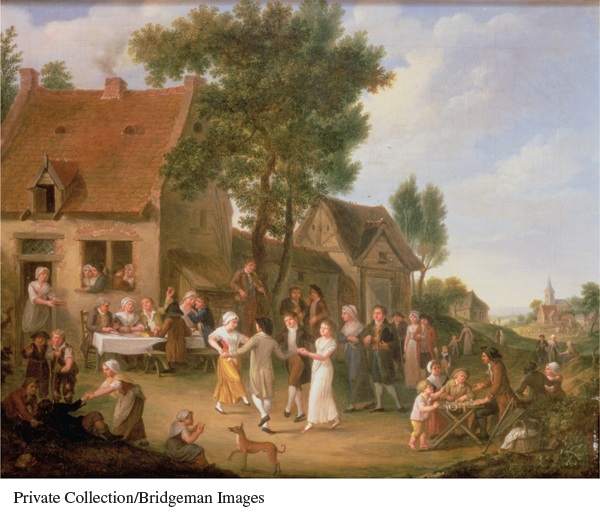A History of Western Society: Printed Page 578
A History of Western Society, Value Edition: Printed Page 556
A History of Western Society, Concise Edition: Printed Page 578
Premarital Sex and Community Controls
Ten years between puberty and marriage was a long time for sexually mature young people to wait. Many unmarried couples satisfied their sexual desires with fondling and petting. Others went further and engaged in premarital intercourse. Those who did so risked pregnancy and the stigma of illegitimate birth. Birth control was not unknown in Europe before the nineteenth century, but it was primitive and unreliable. Condoms, made from sheep intestines, became available in the mid-
Despite the lack of reliable contraception, premarital sex did not result in a large proportion of illegitimate births in most parts of Europe until 1750. English parish registers seldom listed more than one illegitimate child out of every twenty children baptized. Some French parishes in the seventeenth century had extraordinarily low rates of illegitimacy, with less than 1 percent of babies born out of wedlock. Illegitimate babies were apparently a rarity, at least as far as the official records are concerned.
Where collective control over sexual behavior among youths failed, community pressure to marry often prevailed. A comparison of marriage and birth dates of seven representative parishes in seventeenth-
The combination of low rates of illegitimate birth with large numbers of pregnant brides reflects the powerful community controls of the traditional village, particularly the open-

The concerns of the village and the family weighed heavily on couples’ lives after marriage as well. Whereas uninvolved individuals today try to stay out of the domestic disputes of their neighbors, the people in peasant communities gave such affairs loud and unfavorable publicity either at the time or during the carnival season (see Leisure and Recreation). Relying on degrading public rituals, known as charivari, the young men of the village would typically gang up on their victim and force him or her to sit astride a donkey facing backward and holding up the donkey’s tail. They would parade the overly brutal spouse-